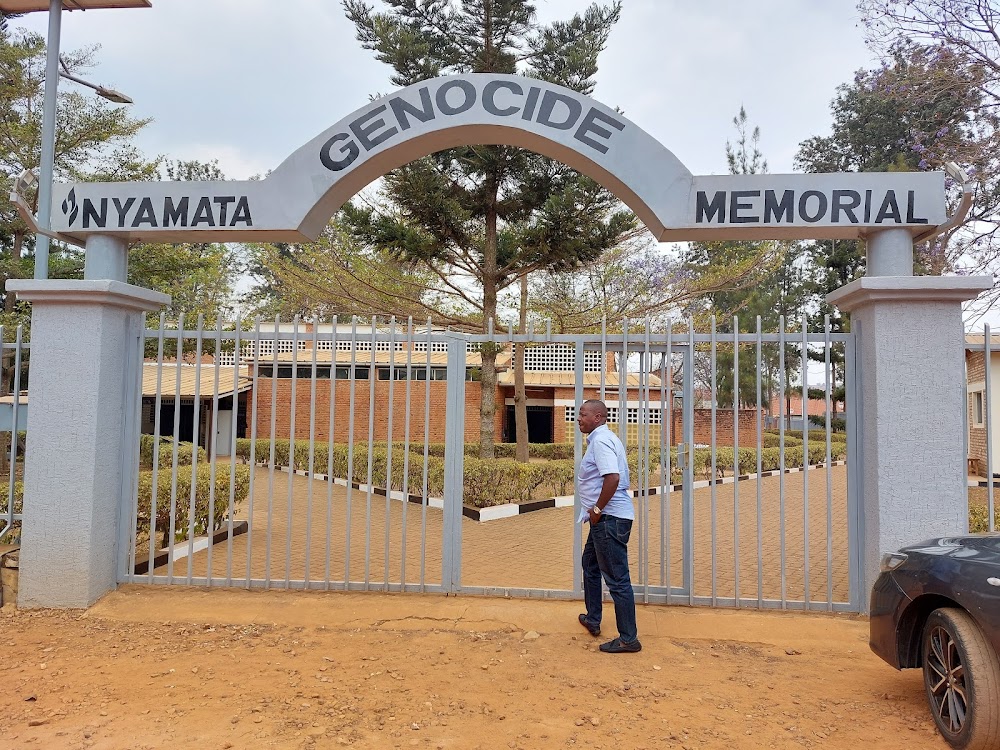Nyakarambi World War I Memorial (Rwibutso rya Nyakarambi ku Ntambara ya Mbere y'Isi)
Overview
Nestled in the heart of Kibungo, Rwanda, the **Nyamata Church Genocide Memorial** stands as a poignant testament to the atrocities of the 1994 genocide. Once a tranquil place of worship, this church became a tragic sanctuary when thousands of Tutsis sought refuge within its walls, only to face unimaginable violence. Today, it serves both as a site of remembrance and a stark symbol of the urgent need for peace and reconciliation.
Originally built in 1980, the church is located approximately 30 kilometers from Kigali. Its modest brick structure, characterized by thick walls, wooden benches, and a simple altar, was designed to meet the spiritual needs of the local community. However, in April 1994, the church's purpose shifted dramatically as it became a site of horror.
During the genocide, around 10,000 Tutsis fled to Nyamata Church, believing they had found sanctuary. Tragically, their faith in the church’s safety was misplaced. Assailants used grenades to breach the doors and windows, followed by a brutal massacre with machetes and firearms. The walls of the church bore witness to the bloodshed, forever stained by the violence that occurred within.
In the aftermath, the site was preserved as a memorial to honor the victims. With support from the Rwandan government and various international organizations, efforts were made to maintain the site as it was on that fateful day. The victims' clothing and personal belongings were left undisturbed, creating a haunting exhibit that deeply impacts visitors.
The interior of the church remains largely untouched, with overturned benches and personal artifacts such as clothing, identity cards, and shoes displayed throughout. These belongings serve as chilling reminders of the lives lost and evoke profound emotions in those who visit.
Beneath the church lies a crypt that holds the remains of over 50,000 victims. Skulls and bones are displayed behind glass panels, serving as a somber reminder of the scale of the tragedy. This display is intended to ensure that the horror and loss are never forgotten, rather than to shock.
The grounds of the memorial are maintained with deep reverence. A simple garden has been established, providing a serene space for reflection and mourning. Plaques inscribed with the names of the victims serve as a poignant reminder to honor each life individually.
In recent years, the Nyamata Church Genocide Memorial has evolved into an important educational site. Schools and universities organize visits, fostering a deeper understanding of Rwanda’s history and the vital importance of unity and peace. Knowledgeable guides lead visitors through the site, providing detailed accounts of the events that transpired and the broader context of the genocide.
The preservation of the Nyamata Church Genocide Memorial exemplifies Rwanda’s commitment to remembering its past. It stands as a powerful educational tool and a solemn reminder of the necessity of vigilance against hatred and violence. Though rooted in a dark period of history, the memorial also embodies hope for a future built on reconciliation and peace.





